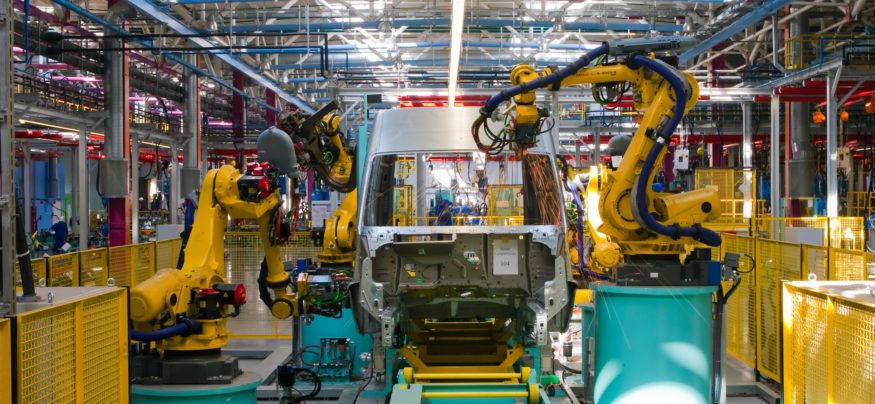Understanding the emerging landscape is a critical first step that can help companies not only adjust to the new reality, but succeed and thrive in it. Here are three challenges facing manufacturers in the age of Industry 4.0 and how to overcome them.
No. 1 – Manufacturing Business Models that Work and Don’t Work in Industry 4.0
Traditionally, manufacturers have sold hard goods through third party distributors and consultants. However, this model disconnects manufacturers from customers creating blind spots. Without customer insights or how third parties are selling their hard goods, manufacturers miss opportunities to cross or upsell those customers on complementary products and services, limiting their potential for scalable revenue growth.
However, manufacturers have a treasure trove of underutilized digital assets capable of providing just as much value to customers as their hard goods. All that is needed is a direct line to their customers that traditional models haven’t supported. Developing a customer-facing digital marketplace provides a wealth of untapped customer engagement models and revenue opportunities. For full advantage, manufacturers must do three things:
1. Offer cloud-based digital services: This adds value to hard goods and expands market opportunity, lowering the barrier to entry for hard goods and making compute-intense products more affordable, both internally and externally.
2. Create an ecosystem of partners: Partners that develop digital products for your goods not only enhances the value of your hardware, but also drives revenue for both you and your partners.
3. Expand your market opportunity: Digital assets can open the door to entirely new business models for manufacturers. “Hardware-as-a-Service” (HaaS), for example, is an increasingly popular approach in manufacturing that generates recurring revenue not only from HaaS, but also the complementary digital services sold with it—instead of relying on the final sale of a hard good.
No. 2 – Retaining Customers with New Digital Business Models
Customer retention is a vital component of Industry 4.0. Many digital products and services today are offered as subscriptions; meaning, instead of a single purchase, customers provide a steady, sustainable source of new revenue. The traditional break/fix model used by hardware manufacturers only offers opportunity for additional revenue when the hardware fails and needs upgrading or replacement.
In general, manufacturers’ customers care about two things: Having working products without any downtime and new ways to be faster and more efficient. Digitization offers clear advantages in both of these areas.
With a digital channel for software, services and upgrades, manufacturers can deliver a range of features designed to retain customers, including:
* Preventative maintenance and analytics: Connected devices can signal to manufacturers when they’re at risk of failing so preventative maintenance can be applied, improving customer trust and satisfaction.
* A digital ecosystem: By centralizing the manufacturer’s entire digital universe, developers can easily create new services for hardware and manufacturers can just as easily sell those digital products.
* SaaS and HaaS: Customers want the flexibility to use the right hardware for their needs, scale it when they need to and bring in the right digital services at the right time. Manufacturers also benefit from the resulting ongoing revenue.
* Customer awards and incentives: A digital platform for software and services allows manufacturers to provide bundles, discounts and other incentives through creative go-to-market strategies that bring a wealth of value and cost savings to customers.
IDC predicts 50 percent of manufacturers will derive business value from the integration of supply chain, plant operations and product and service lifecycle management by 2020. However, to stay relevant and be ahead of consumer trends, manufacturers must drive competitive value through customer-centric digital experiences.
No. 3 – How Improving Digital Experiences Drives Competitive Value
Tesla, as a manufacturing company, has succeeded in creating a digital customer experience that drives value. Within a few short years, the pioneering car company has created a higher stock value than Fiat-Chrysler, an automaker that is more than 100 years old.
Innovative design is one part, but the customer-winning experience is powered by software. For Tesla—and other forward-looking companies like it—software has become a game-changer.
Digital experiences can differentiate a manufacturer because software —
* Can change faster than hardware: Giving manufacturers the agility needed to respond to changing markets and stay ahead of competitors.
* Provides ongoing value: Digital services allow manufacturers to extend the utility of a physical good long after the sale.
* Delivers insights: Context-driven usage data collected by smart hardware helps companies give customers the functionalities and overall experience they want.
* Sends a message to customers: Putting the customer at the center exemplifies a company’s concern for keeping customers satisfied and gives manufacturers an ongoing touchpoint, creating long-term connections that are the engine of customer retention.
The Bottom Line: Now Is the Time to Go Digital
In today’s manufacturing climate, the value of selling hardware alone is trending downward. Given the incredible potential software creates for physical goods, time is quickly running out for manufacturers that have yet to join the digital revolution. With this in mind, manufacturers should be investing in digital business models and all of the opportunities for sustainable, ongoing revenue and a better customer experience that they can bring.
Dan Saks is President & Co-CEO of AppDirect.
Copyright Advantage Business Media Jun 26, 2018
This article was from Manufacturing Business Technology and was legally licensed through the NewsCred publisher network. Please direct all licensing questions to legal@newscred.com.
![]()








